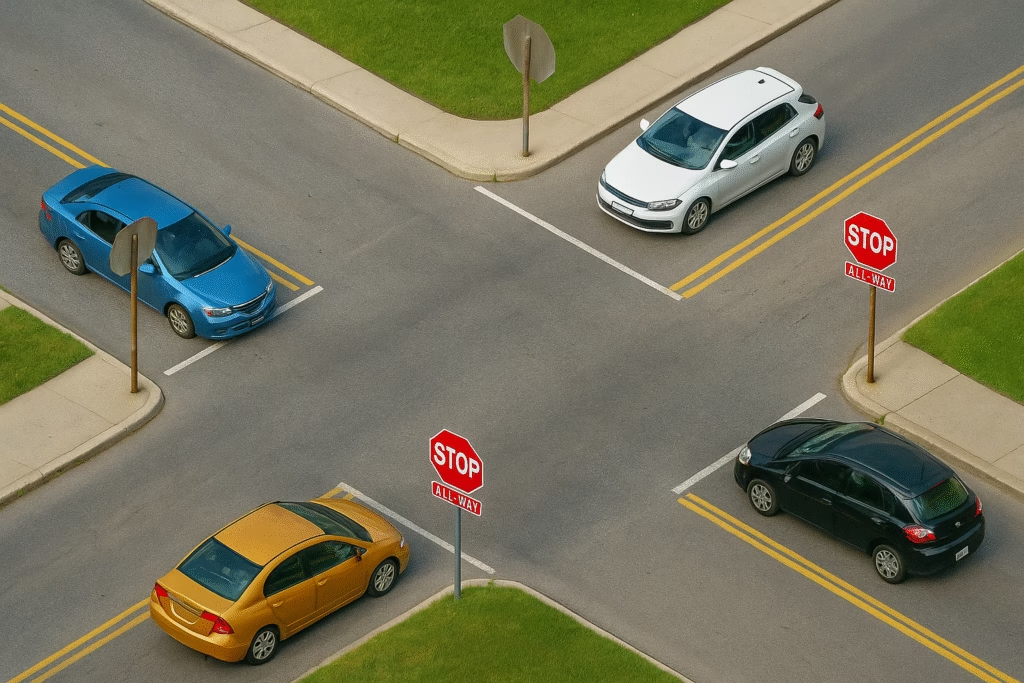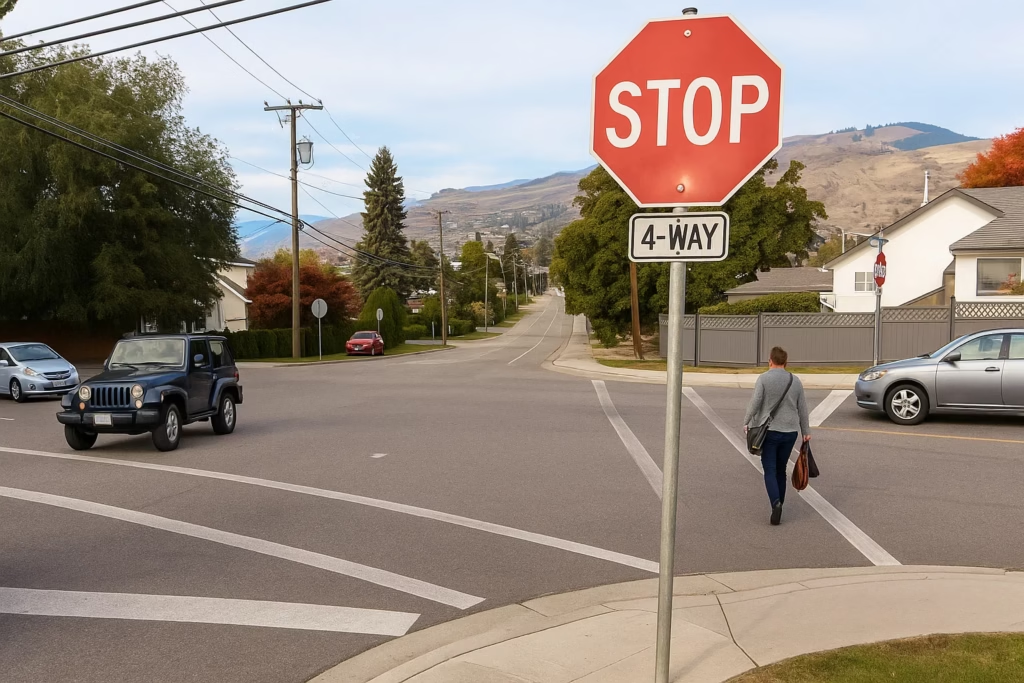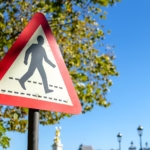Driving can feel stressful at times, especially when you approach an intersection and have to figure out who goes first. One of the most confusing spots for new drivers (and sometimes even experienced ones) is the 4-way stop. If you’ve ever pulled up to one and hesitated while making awkward eye contact with other drivers, you’re not alone.
What Is a 4-Way Stop?
A 4-way stop is an intersection where all four roads leading into the intersection have stop signs. That means every driver who comes to the intersection must stop completely before deciding who should go next.
01. First Come, First Go
The simplest and most important rule of a 4-way stop is this:
Whoever arrives first at the stop sign has the right of way and should go first.
For example:
If you arrive at the stop sign and no one else is there, you stop, check for safety, and then go.
If another car is already at the intersection when you arrive, you wait your turn until they go.
This is the “first come, first served” system of the road. Easy, right?
02. When Two Cars Arrive at the Same Time
Things can get tricky when two cars pull up to the intersection at the same time. Here’s what you need to remember:
Yield to the right.
If two cars arrive at the same time, the car on the right goes first.Example: You and another driver reach the stop at the same moment. If the other car is on your right, let them go first.
Same direction? Take turns.
If you and another driver are facing each other (head-to-head) and you’re both going straight, you can both go at the same time.One going straight, one turning?
If you’re facing another driver and one of you is going straight while the other wants to turn left, the driver going straight goes first. The turning car must wait.
03. When Three or Four Cars Arrive at the Same Time
This is where confusion happens most often. Imagine three or four cars all arriving at the stop signs at the same time. What now?
Look to the right. Always yield to the driver on your right.
Communicate. Sometimes it helps to use hand signals, nods, or eye contact. A polite wave can also let others know you’re giving them the go-ahead.
Stay calm. If no one moves, just wait a moment. Usually, one driver will eventually proceed and everyone else can follow in order.

Special Situations
Here are a few extra scenarios that come up at 4-way stops:
1. Pedestrians
- Pedestrians always have the right of way. If someone is walking across the intersection, all vehicles must stop and let them cross completely.
2. Bicycles
- Cyclists are treated like cars at a 4-way stop. They must stop and follow the same rules, but be extra careful—sometimes cyclists don’t stop fully.
3. Emergency Vehicles
- If an ambulance, fire truck, or police car with flashing lights and sirens approaches, they always have the right of way. Pull over safely and let them go through.
4. Large Vehicles
- Buses, trucks, or vehicles towing trailers may take longer to move. Be patient and give them space.
Common Mistakes
Knowing the rules is one thing, but many drivers make mistakes out of habit or nerves. Here are the most common ones to avoid:
Rolling Stops (a.k.a. California Roll)
Some drivers don’t fully stop; they just slow down and roll through. This is dangerous and illegal. Always come to a complete stop.Jumping the Gun
Going before it’s your turn can confuse other drivers and cause accidents. Be patient.Waving Everyone Through
Being polite is good, but if you always wave others through when it’s your turn, it disrupts the flow and creates confusion. Follow the rules instead.Not Paying Attention
Looking at your phone, fiddling with the radio, or daydreaming at a 4-way stop can easily cause a collision. Stay alert and watch the other vehicles.
Driving is all about cooperation and respect. At a 4-way stop, every driver plays a part in keeping the intersection safe and smooth. So next time you roll up to one, take a breath, remember these rules, and handle it like a pro.
Discover more from SMOOTHSTEERING
Subscribe to get the latest posts sent to your email.



